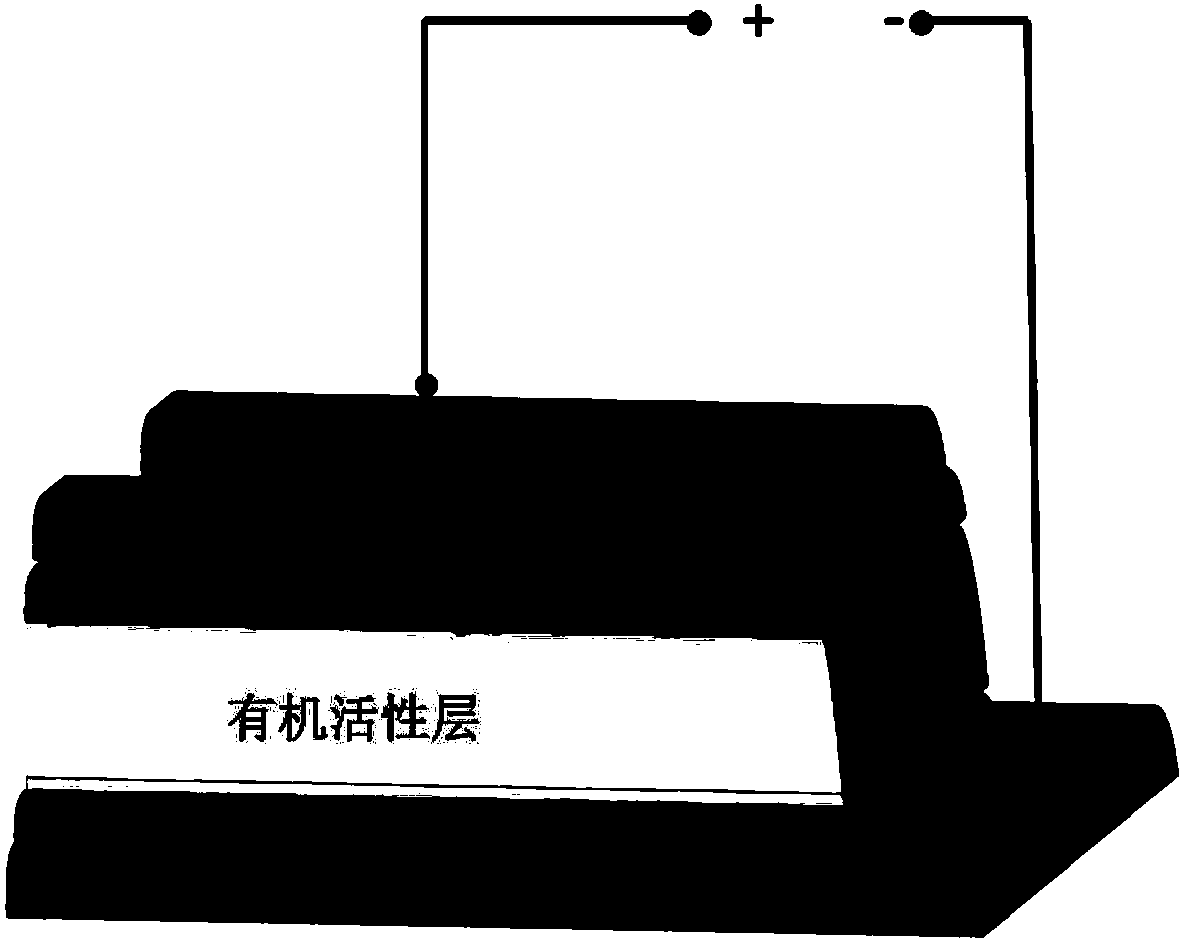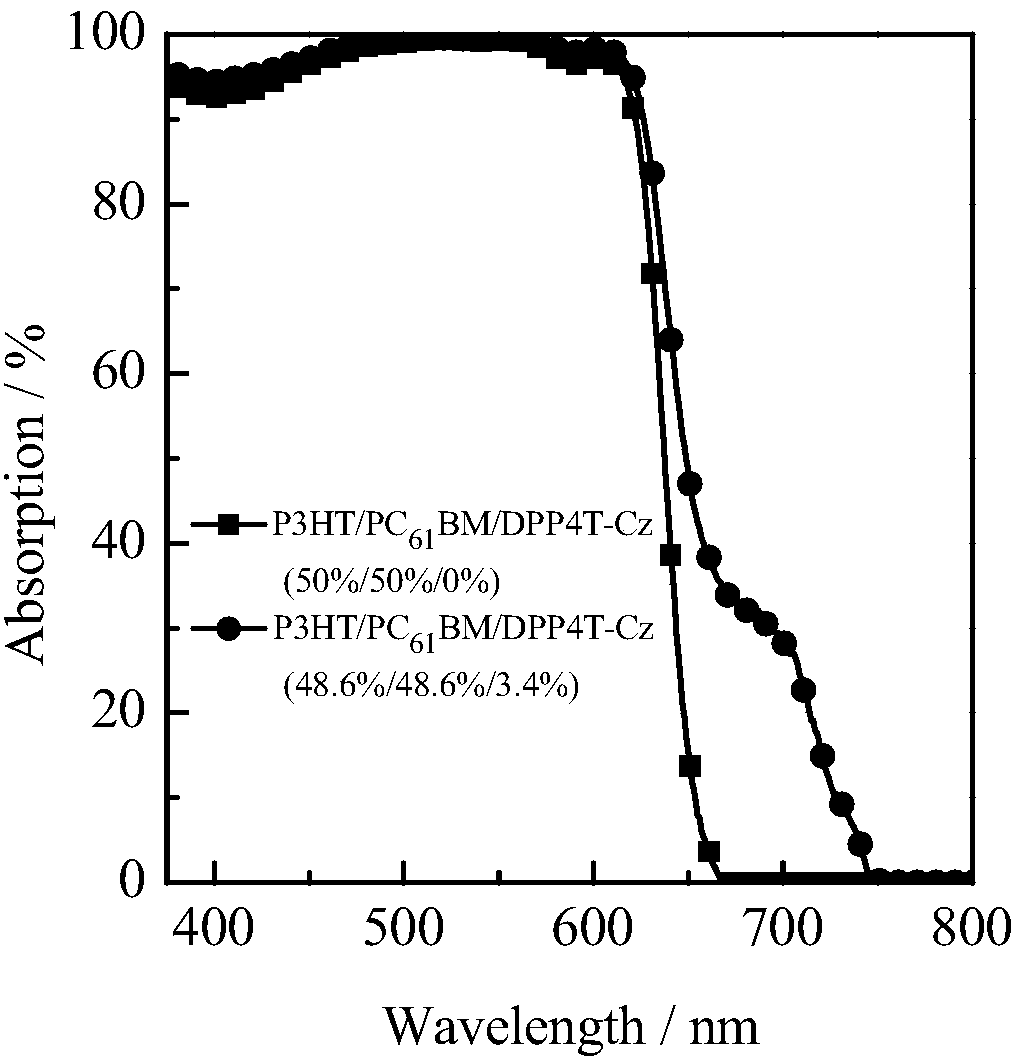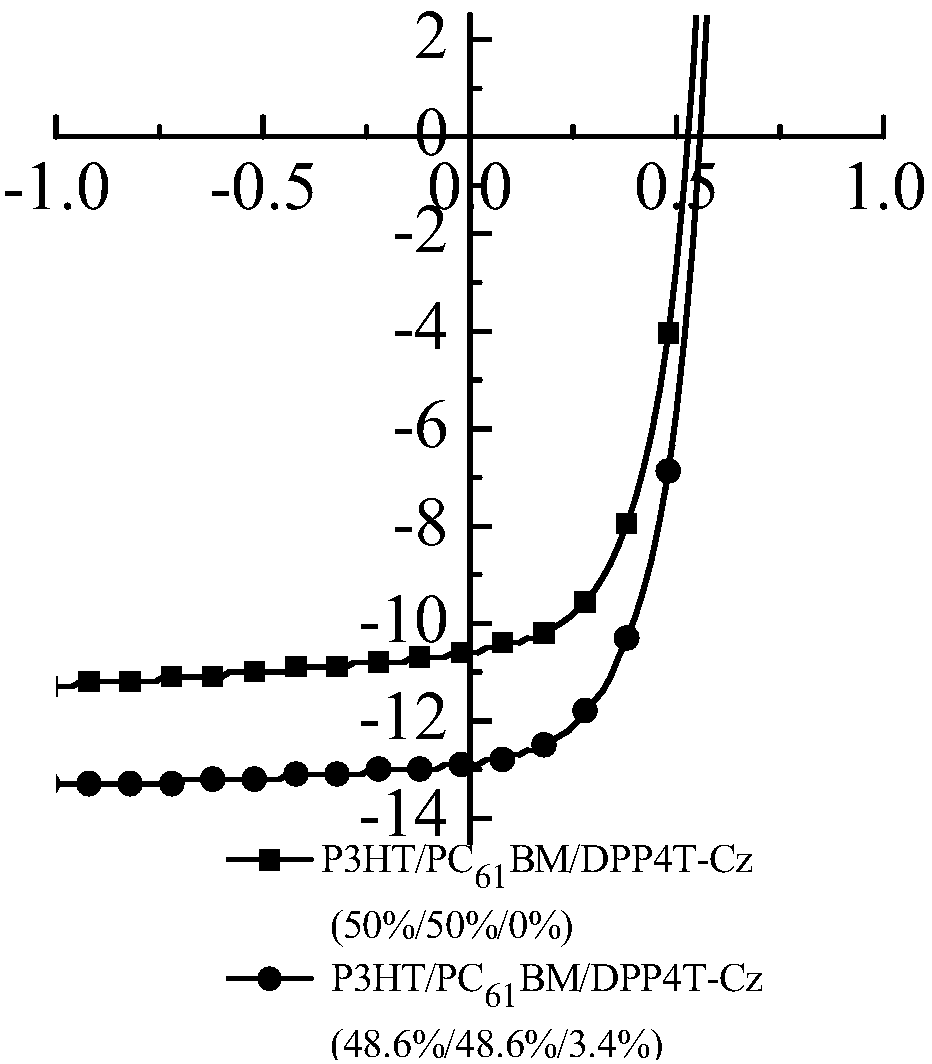Active layer used for ternary blending solar cell and application of active layer
A solar cell and active layer technology, applied in the field of active layer, can solve the problems of increasing carrier recombination probability, insufficient optimization of optical absorption efficiency, and decline of fill factor photovoltaic performance
- Summary
- Abstract
- Description
- Claims
- Application Information
AI Technical Summary
Problems solved by technology
Method used
Image
Examples
Embodiment 1
[0031] Ternary blend solar cell from bottom to top is transparent glass substrate, transparent conductive cathode ITO, electron transport layer made of ZnO, organic active layer, made of MoO 3 The hole transport layer, metal anode Au,
[0032] Among them, the thickness of the electron transport layer is 15nm, the thickness of the organic active layer is 300nm, the thickness of the hole transport layer is 20nm, and the thickness of the metal anode is 100nm.
[0033] (1) The substrate composed of the glass transparent substrate and the transparent conductive cathode ITO is sequentially cleaned with toluene, acetone, and ethanol, dried with nitrogen, and treated with ozone;
[0034] (2) Mix zinc acetate dihydrate, ethanolamine and 2-methoxyethanol and stir overnight for hydrolysis reaction to obtain ZnO precursor liquid, and rotate the obtained ZnO precursor liquid at 800rpm for 10s and 3000rpm for 60s Finally, spin-coat to the ITO surface after step (1), then anneal 1h at 180°C...
PUM
 Login to View More
Login to View More Abstract
Description
Claims
Application Information
 Login to View More
Login to View More - R&D
- Intellectual Property
- Life Sciences
- Materials
- Tech Scout
- Unparalleled Data Quality
- Higher Quality Content
- 60% Fewer Hallucinations
Browse by: Latest US Patents, China's latest patents, Technical Efficacy Thesaurus, Application Domain, Technology Topic, Popular Technical Reports.
© 2025 PatSnap. All rights reserved.Legal|Privacy policy|Modern Slavery Act Transparency Statement|Sitemap|About US| Contact US: help@patsnap.com



